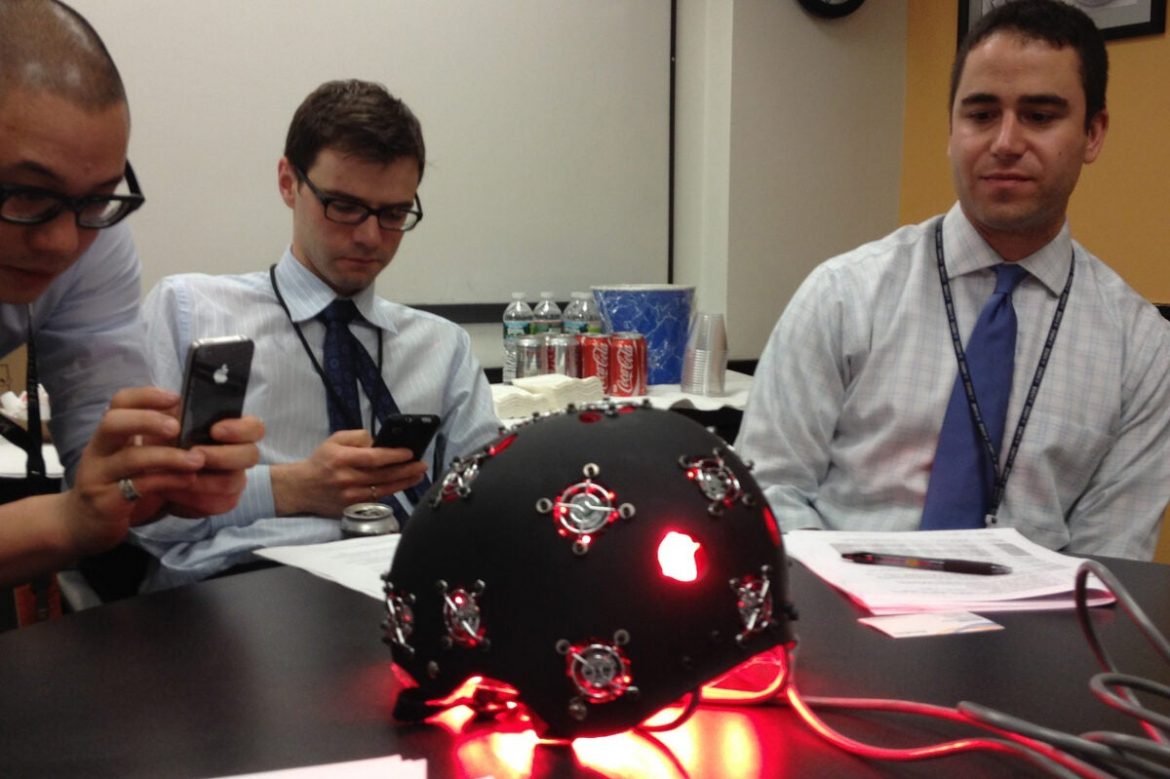Light therapy is safe and has measurable effects in the brain, according to a pioneering study by researchers from the Wellman Center for Photomedicine at Massachusetts General Hospital (MGH). Senior investigators Rajiv Gupta, director of the Ultra-High Resolution Volume CT Lab at MGH, and Benjamin Vakoc at the Wellman Center led the study, which was supported by a grant from the Department of Defense (DOD) and published in JAMA Network Open Sept. 14.
This study is one of the first prospective, randomized, interventional clinical trials of near-infrared, low-level light therapy (LLLT) in patients who recently suffered a moderate brain injury. If further trials support these findings, light therapy could become the first widely-accepted treatment for this type of injury.
TBI is the leading cause of traumatic injury worldwide, and an estimated 69 million people experience such an injury every year. However, there are no treatments for this condition yet, largely because the underlying biological mechanisms are not well understood and it is so challenging to do studies with actual patients in the acute stage of trauma.
“The Gulf War put TBI in the headlines because body armor had been greatly improved by then,” said Gupta. “But there were still brain injuries caused by the shock waves from high powered explosives.” For a variety of reasons, the number of TBIs has increased around the globe since then, but effective treatments are still sorely needed.
For this study, a special helmet had to be designed specifically to deliver the therapy, an undertaking that required a mix of medical, engineering and physics expertise. This multidisciplinary team included Gupta, a neuroradiologist, Vakoc, an applied physicist, and others specializing in the development and translation of optical instrumentation to the clinic and biologic laboratories. Both Gupta and Vakoc are also associate professors at Harvard Medical School.
“For this study, we designed a practical, near-infrared treatment based on Wellman Center research and working directly with DOD on the vexing problem of TBI, a condition faced by so many,” said Rox Anderson, the center’s director.
Another challenge was optimizing the wavelength of the near-infrared LLLT. “Nobody knows how much light you need to get the optimal effect,” said Lynn Drake, one of the study co-authors and director of business development at the Wellman Center. “We tried to optimize the wavelength, dosing, timing of delivery, and length of exposure.” This was done through a series of pre-clinical experiments led by Anderson. These included multiple preclinical studies led by Michael Hamblin. Anderson and Hamblin are also both co-authors on this paper.
Near-infrared LLLT has already been considered for multiple uses, but to date, few if any studies of this technology have been tested and none in patients with TBI. It has been studied in stroke patients and Wellman basic laboratory research suggests it is neuroprotective through a mechanism mediated by specialized intracellular organs called mitochondria. It took several years of research at Wellman to understand the basic mechanism prior to the clinical trial.
The randomized clinical trial included 68 patients with moderate traumatic brain injury who were divided into two groups. One group received LLLT, via the special helmet, which delivered the light. Patients in the control group wore the helmet for the same amount of time, but did not receive the treatment. The helmet was designed by Vakoc’s team at Wellman. During the study, the subjects’ brains were tested for neuroreactivity using quantitative magnetic resonance imaging (MRI) metrics and the subjects also underwent neurocognitive function assessment.
MRI was performed in the acute (within 72 hours of the injury), early subacute (two to three weeks), and late subacute (approximately three months) stages of recovery. Clinical assessments were performed during each visit and at six months, using the Rivermead Post-Concussion Questionnaire, with each item assessed on a five-point scale.

